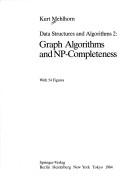| Listing 1 - 10 of 10 |
Sort by
|
Dissertation
Year: 2018 Publisher: Liège Université de Liège (ULiège)
Abstract | Keywords | Export | Availability | Bookmark
 Loading...
Loading...Choose an application
- Reference Manager
- EndNote
- RefWorks (Direct export to RefWorks)
Selon Schützwohl et al. (2016), les comportements problématiques sont des comportements socialement inadéquats qui causent une détresse, de la violence et un repli sur soi de la personne qui les émet et qui ont aussi un impact sur l’entourage. Ces comportements ont des conséquences dommageables puisqu’ils mettent la personne à l’écart des autres voir même de la société (Emerson 1995 ; Emerson, 2015). Les personnes en situation de handicap constituent un public vulnérable vis-à-vis de l’expression de comportements problématiques. En effet, il existe des facteurs de risque qui augmentent les risques d’en présenter (Schützwohl et al. 2016). La présente étude a pour objectif d’identifier, de comprendre et de diminuer les troubles du comportement de deux personnes vieillissantes en situation de handicap et vivant au sein d’un service résidentiel et ce, à l’aide de l’évaluation fonctionnelle. Pour cela, des observations sont réalisées et des interventions sont mises en place au niveau de l’environnement physique et social des personnes qui émettent les comportements problématiques. En effet, selon l’approche de l’évaluation fonctionnelle, les comportements problématiques sont causés et renforcés par des facteurs contextuels (environnement et social). Il est donc important de comprendre ces facteurs qui causent et maintiennent les comportements problématiques pour pouvoir réaliser une intervention adéquate (O’Neill et al. 2008).
évaluation fonctionnelle --- troubles du comportement --- handicap --- analyse de cas --- vieillissement --- institution --- functional assessment --- challenging behaviours --- disabilities --- case analysis --- ageing --- institution --- Sciences sociales & comportementales, psychologie > Psychologie cognitive & théorique
Multi
ISBN: 9080076945 Year: 1993 Publisher: Amsterdam : [s.n.],
Abstract | Keywords | Export | Availability | Bookmark
 Loading...
Loading...Choose an application
- Reference Manager
- EndNote
- RefWorks (Direct export to RefWorks)
Computer architecture --- Ordinateurs --- Architecture --- 681.3*B12 --- 681.3*B22 --- 681.3*B63 --- 681.3*C10 --- Control structure performance analysis and design aids: automatic synthesis; formal models; simulation --- Performance analysis and design aids: simulation; verification; worst-case analysis (Arithmetic and logic structures) --- Design aids: automatic synthesis; hardware description languages; optimization; simulation; switching theory; verification (Logic design) --- Computerwetenschap--?*C10 --- Theses --- 681.3*B63 Design aids: automatic synthesis; hardware description languages; optimization; simulation; switching theory; verification (Logic design) --- 681.3*B22 Performance analysis and design aids: simulation; verification; worst-case analysis (Arithmetic and logic structures) --- 681.3*B12 Control structure performance analysis and design aids: automatic synthesis; formal models; simulation

ISBN: 354013641X 3642698999 3642698972 9783540136415 Year: 1984 Volume: 2 Publisher: Berlin: Springer,
Abstract | Keywords | Export | Availability | Bookmark
 Loading...
Loading...Choose an application
- Reference Manager
- EndNote
- RefWorks (Direct export to RefWorks)
#TELE:SISTA --- 681.3*B22 --- 681.3*F13 --- Performance analysis and design aids: simulation; verification; worst-case analysis (Arithmetic and logic structures) --- Complexity classes: complexity hierarchies; machine-independent complexity; reducibility and completeness; relations among complexity classes; relations among complexity measures (Computation by abstract devices)--See also {681.3*F2} --- Algoritmen --- Bestandsorganisatie --- Sorteermethoden --- Zoekmethoden --- Algoritmen. --- Bestandsorganisatie. --- Sorteermethoden. --- Zoekmethoden. --- 681.3*F13 Complexity classes: complexity hierarchies; machine-independent complexity; reducibility and completeness; relations among complexity classes; relations among complexity measures (Computation by abstract devices)--See also {681.3*F2} --- 681.3*B22 Performance analysis and design aids: simulation; verification; worst-case analysis (Arithmetic and logic structures) --- Np Complete --- Matrix Multiplication --- Turing Machine --- Graph

ISBN: 0818619465 Year: 1989 Publisher: Washington (D.C.): IEEE computer society press
Abstract | Keywords | Export | Availability | Bookmark
 Loading...
Loading...Choose an application
- Reference Manager
- EndNote
- RefWorks (Direct export to RefWorks)
Information Technology --- Computer Science (Hardware & Networks) --- 681.3*I61 --- 681.3*B12 --- 681.3*B22 --- 681.3*B63 --- Simulation theory: model classification; continuous simulation; discrete simulation (Simulation and modeling) --- Control structure performance analysis and design aids: automatic synthesis; formal models; simulation --- Performance analysis and design aids: simulation; verification; worst-case analysis (Arithmetic and logic structures) --- Design aids: automatic synthesis; hardware description languages; optimization; simulation; switching theory; verification (Logic design) --- 681.3*B63 Design aids: automatic synthesis; hardware description languages; optimization; simulation; switching theory; verification (Logic design) --- 681.3*B22 Performance analysis and design aids: simulation; verification; worst-case analysis (Arithmetic and logic structures) --- 681.3*B12 Control structure performance analysis and design aids: automatic synthesis; formal models; simulation --- 681.3*I61 Simulation theory: model classification; continuous simulation; discrete simulation (Simulation and modeling)
Book
ISBN: 1283539993 9786613852441 1400845440 9781400845446 9781283539999 9780691149714 0691149704 9780691149707 0691149712 Year: 2012 Publisher: Princeton, N.J. : Princeton University Press,
Abstract | Keywords | Export | Availability | Bookmark
 Loading...
Loading...Choose an application
- Reference Manager
- EndNote
- RefWorks (Direct export to RefWorks)
Some in the social sciences argue that the same logic applies to both qualitative and quantitative methods. In A Tale of Two Cultures, Gary Goertz and James Mahoney demonstrate that these two paradigms constitute different cultures, each internally coherent yet marked by contrasting norms, practices, and toolkits. They identify and discuss major differences between these two traditions that touch nearly every aspect of social science research, including design, goals, causal effects and models, concepts and measurement, data analysis, and case selection. Although focused on the differences between qualitative and quantitative research, Goertz and Mahoney also seek to promote toleration, exchange, and learning by enabling scholars to think beyond their own culture and see an alternative scientific worldview. This book is written in an easily accessible style and features a host of real-world examples to illustrate methodological points.
Social sciences --- Political sociology --- Political science --- Mass political behavior --- Political behavior --- Sociology --- Administration --- Civil government --- Commonwealth, The --- Government --- Political theory --- Political thought --- Politics --- Science, Political --- State, The --- Research --- Methodology. --- Sociological aspects --- 2 x 2 tables. --- David Hume. --- Fundamental Principle of Variable Transformation. --- Fundamental Problem of Causal Inference. --- Fundamental Tradeoffs. --- Hooke's law. --- Principle of Conceptual Opposites. --- Principle of Conceptual Overlap. --- Principle of Unimportant Variation. --- additive-linear causal model. --- aggregation technique. --- asymmetry. --- case selection. --- case studies. --- cases. --- categories. --- causal complexity. --- causal effects. --- causal heterogeneity. --- causal inference. --- causal mechanism. --- causal model. --- causal models. --- causal-process observations. --- causality. --- causation. --- cause. --- causes-of-effects approach. --- characteristics. --- concepts. --- conceptualization. --- constant conjunction definition. --- control variables. --- counterfactual analysis. --- counterfactual definition. --- counterfactuals. --- cross-case analysis. --- data analysis. --- data transformations. --- data-set observations. --- definitions. --- dependent variable. --- effects-of-causes approach. --- empirical testing. --- equifinality. --- error. --- experiments. --- fuzziness. --- fuzzy-set analysis. --- fuzzy-set transformations. --- generalization. --- hypothesis testing. --- indicators. --- individual case analysis. --- individual cases. --- inferential statistics. --- logging. --- logic. --- meaning retention. --- measurement. --- membership functions. --- methodological pluralism. --- minimum rewrite rule. --- mixed-method research. --- multimethod research. --- multiple causation. --- natural language. --- necessary condition. --- nonoccurrence. --- occurrence. --- opposites. --- perfect predictors. --- political science. --- probability theory. --- process tracing. --- qualitative research. --- quantitative research. --- regression. --- scale types. --- scope conditions. --- semantic transformations. --- semantics. --- set theory. --- set-theoretic causal model. --- set-theoretic generalization. --- social science research. --- social sciences. --- sociology. --- standardization. --- static causal asymmetry. --- statistical analysis. --- statistical method. --- statistical model. --- statistics. --- sufficient condition. --- symmetry. --- translation problems. --- typologies. --- variable transformations. --- within-case analysis. --- within-model responses.

ISBN: 3540128964 0387128964 9780387128962 3540387757 Year: 1984 Volume: 164 Publisher: Berlin Springer
Abstract | Keywords | Export | Availability | Bookmark
 Loading...
Loading...Choose an application
- Reference Manager
- EndNote
- RefWorks (Direct export to RefWorks)
Programming --- 681.3*B22 --- 681.3*B63 --- 681.3*D24 --- 681.3*F3 --- 681.3*F41 --- Performance analysis and design aids: simulation; verification; worst-case analysis (Arithmetic and logic structures) --- Design aids: automatic synthesis; hardware description languages; optimization; simulation; switching theory; verification (Logic design) --- Program verification: assertion checkers; correctness proofs; reliability; validation (Software engineering)--See also {681.3*F31} --- Logics and meanings of programs (Theory of computation) --- Mathematical logic: computability theory; computational logic; lambda calculus; logic programming; mechanical theorem proving; model theory; proof theory;recursive function theory--See also {681.3*F11}; {681.3*I22}; {681.3*I23} --- Computer programming --- Programmation (Informatique) --- Logiciels --- Congresses. --- 681.3*F41 Mathematical logic: computability theory; computational logic; lambda calculus; logic programming; mechanical theorem proving; model theory; proof theory;recursive function theory--See also {681.3*F11}; {681.3*I22}; {681.3*I23} --- 681.3*F3 Logics and meanings of programs (Theory of computation) --- 681.3*D24 Program verification: assertion checkers; correctness proofs; reliability; validation (Software engineering)--See also {681.3*F31} --- 681.3*B63 Design aids: automatic synthesis; hardware description languages; optimization; simulation; switching theory; verification (Logic design) --- 681.3*B22 Performance analysis and design aids: simulation; verification; worst-case analysis (Arithmetic and logic structures) --- Logic design. --- Computer science. --- Logics and Meanings of Programs. --- Mathematical Logic and Formal Languages. --- Informatics --- Science --- Design, Logic --- Design of logic systems --- Digital electronics --- Electronic circuit design --- Logic circuits --- Machine theory --- Switching theory

ISBN: 0444863303 9780444863300 Year: 1981 Publisher: Amsterdam: North-Holland,
Abstract | Keywords | Export | Availability | Bookmark
 Loading...
Loading...Choose an application
- Reference Manager
- EndNote
- RefWorks (Direct export to RefWorks)
Electronic digital computers --- Queuing theory --- Electronic data processing --- Evaluation --- Congresses --- congresses --- Distributed processing --- 681.3*H --- -Queuing theory --- -Electronic data processing --- -681.3*A0 --- 681.3*B44 --- 681.3*C4 --- ADP (Data processing) --- Automatic data processing --- Data processing --- EDP (Data processing) --- IDP (Data processing) --- Integrated data processing --- Computers --- Office practice --- Erlang traffic formula --- Queueing theory --- Theory of queues --- Waiting-line theory --- Production scheduling --- Stochastic processes --- Automatic digital computers --- Computers, Electronic digital --- Digital computers, Electronic --- Hybrid computers --- Sequential machine theory --- Information systems --- -Congresses --- General --- Performance analysis and design aids: formal models; simulation; verification; worst-case analysis (Input/output and data communications) --- Performance of systems (Computer systems organization) --- Automation --- 681.3*C4 Performance of systems (Computer systems organization) --- 681.3*B44 Performance analysis and design aids: formal models; simulation; verification; worst-case analysis (Input/output and data communications) --- 681.3*A0 General --- 681.3*H Information systems --- 681.3*A0 --- Distributed processing&delete& --- Evaluation&delete& --- Electronic digital computers - Evaluation - Congresses --- Queuing theory - Congresses --- Electronic data processing - Distributed processing - Congresses
Book
Year: 2021 Publisher: Basel, Switzerland MDPI - Multidisciplinary Digital Publishing Institute
Abstract | Keywords | Export | Availability | Bookmark
 Loading...
Loading...Choose an application
- Reference Manager
- EndNote
- RefWorks (Direct export to RefWorks)
Disasters such as earthquakes, cyclones, floods, heat waves, nuclear accidents, and large-scale pollution incidents take lives and incur major health problems. The majority of large-scale disasters affect the most vulnerable populations, which often comprise extreme ages, remote living areas, and endemic poverty, as well as people with low literacy. Health emergency and disaster risk management (Health-EDRM) refers to the systematic analysis and management of health risks surrounding emergencies and disasters, and plays an important role in reducing the hazards and vulnerability along with extending preparedness, responses, and recovery measures. This concept encompasses risk analyses and interventions, such as accessible early warning systems, the timely deployment of relief workers, and the provision of suitable drugs and medical equipment to decrease the impact of disasters on people before, during, and after an event (or events). Currently, there is a major gap in the scientific literature regarding Health-EDRM to facilitate major global policies and initiatives for disaster risk reduction worldwide.
Public health & preventive medicine --- infection spread and control --- infection risk --- human behavior --- close contact --- sensor-based --- indoor environment --- indoor positioning --- head and body motion --- open-plan office --- disaster --- psychosocial impacts --- community resilience --- Kumamoto earthquake --- DMHISS --- disaster psychiatry --- Japan --- acute mental health needs --- duration of activity --- DPAT (Disaster Psychiatric Assistance Team) --- cold --- personal health protective behaviour --- associated factors --- risk perception --- subtropical city --- disaster responders --- support --- psychosocial --- risk management --- COVID-19 --- urban --- health risks --- Health-Emergency and Disaster Risk Management --- biological hazard --- pandemic --- PHEIC --- Hong Kong --- Fukushima nuclear accident --- mass media --- Internet --- public health practice --- community mental health services --- typhoon --- hurricane --- cyclone --- strong wind levels --- natural disaster --- Health-EDRM --- risk-taking behaviour --- sensation seeking --- landslide displacement --- predictive uncertainty --- ensemble prediction --- probability combination scheme --- quantile regression neural networks (QRNNs) --- kernel density estimation (KDE) --- Daegu --- sense of belonging --- pride --- mental health --- disaster relief fund --- non-communicable disease --- self-care --- NCD management --- home care --- early phase of pandemic --- health-EDRM --- primary prevention --- vector-borne disease --- biological hazards --- climate change --- narrative review --- Asia Pacific --- Health EDRM --- long-term impact --- public health --- case study --- disaster management --- multi-case analysis --- Europe --- flood --- elderly --- cardiovascular diseases --- cerebrovascular diseases --- H-EDRM --- extreme temperature --- socioeconomic vulnerability --- health disparities --- n/a
Book
Year: 2021 Publisher: Basel, Switzerland MDPI - Multidisciplinary Digital Publishing Institute
Abstract | Keywords | Export | Availability | Bookmark
 Loading...
Loading...Choose an application
- Reference Manager
- EndNote
- RefWorks (Direct export to RefWorks)
Disasters such as earthquakes, cyclones, floods, heat waves, nuclear accidents, and large-scale pollution incidents take lives and incur major health problems. The majority of large-scale disasters affect the most vulnerable populations, which often comprise extreme ages, remote living areas, and endemic poverty, as well as people with low literacy. Health emergency and disaster risk management (Health-EDRM) refers to the systematic analysis and management of health risks surrounding emergencies and disasters, and plays an important role in reducing the hazards and vulnerability along with extending preparedness, responses, and recovery measures. This concept encompasses risk analyses and interventions, such as accessible early warning systems, the timely deployment of relief workers, and the provision of suitable drugs and medical equipment to decrease the impact of disasters on people before, during, and after an event (or events). Currently, there is a major gap in the scientific literature regarding Health-EDRM to facilitate major global policies and initiatives for disaster risk reduction worldwide.
infection spread and control --- infection risk --- human behavior --- close contact --- sensor-based --- indoor environment --- indoor positioning --- head and body motion --- open-plan office --- disaster --- psychosocial impacts --- community resilience --- Kumamoto earthquake --- DMHISS --- disaster psychiatry --- Japan --- acute mental health needs --- duration of activity --- DPAT (Disaster Psychiatric Assistance Team) --- cold --- personal health protective behaviour --- associated factors --- risk perception --- subtropical city --- disaster responders --- support --- psychosocial --- risk management --- COVID-19 --- urban --- health risks --- Health-Emergency and Disaster Risk Management --- biological hazard --- pandemic --- PHEIC --- Hong Kong --- Fukushima nuclear accident --- mass media --- Internet --- public health practice --- community mental health services --- typhoon --- hurricane --- cyclone --- strong wind levels --- natural disaster --- Health-EDRM --- risk-taking behaviour --- sensation seeking --- landslide displacement --- predictive uncertainty --- ensemble prediction --- probability combination scheme --- quantile regression neural networks (QRNNs) --- kernel density estimation (KDE) --- Daegu --- sense of belonging --- pride --- mental health --- disaster relief fund --- non-communicable disease --- self-care --- NCD management --- home care --- early phase of pandemic --- health-EDRM --- primary prevention --- vector-borne disease --- biological hazards --- climate change --- narrative review --- Asia Pacific --- Health EDRM --- long-term impact --- public health --- case study --- disaster management --- multi-case analysis --- Europe --- flood --- elderly --- cardiovascular diseases --- cerebrovascular diseases --- H-EDRM --- extreme temperature --- socioeconomic vulnerability --- health disparities --- n/a
Book
Year: 2021 Publisher: Basel, Switzerland MDPI - Multidisciplinary Digital Publishing Institute
Abstract | Keywords | Export | Availability | Bookmark
 Loading...
Loading...Choose an application
- Reference Manager
- EndNote
- RefWorks (Direct export to RefWorks)
Disasters such as earthquakes, cyclones, floods, heat waves, nuclear accidents, and large-scale pollution incidents take lives and incur major health problems. The majority of large-scale disasters affect the most vulnerable populations, which often comprise extreme ages, remote living areas, and endemic poverty, as well as people with low literacy. Health emergency and disaster risk management (Health-EDRM) refers to the systematic analysis and management of health risks surrounding emergencies and disasters, and plays an important role in reducing the hazards and vulnerability along with extending preparedness, responses, and recovery measures. This concept encompasses risk analyses and interventions, such as accessible early warning systems, the timely deployment of relief workers, and the provision of suitable drugs and medical equipment to decrease the impact of disasters on people before, during, and after an event (or events). Currently, there is a major gap in the scientific literature regarding Health-EDRM to facilitate major global policies and initiatives for disaster risk reduction worldwide.
Public health & preventive medicine --- infection spread and control --- infection risk --- human behavior --- close contact --- sensor-based --- indoor environment --- indoor positioning --- head and body motion --- open-plan office --- disaster --- psychosocial impacts --- community resilience --- Kumamoto earthquake --- DMHISS --- disaster psychiatry --- Japan --- acute mental health needs --- duration of activity --- DPAT (Disaster Psychiatric Assistance Team) --- cold --- personal health protective behaviour --- associated factors --- risk perception --- subtropical city --- disaster responders --- support --- psychosocial --- risk management --- COVID-19 --- urban --- health risks --- Health-Emergency and Disaster Risk Management --- biological hazard --- pandemic --- PHEIC --- Hong Kong --- Fukushima nuclear accident --- mass media --- Internet --- public health practice --- community mental health services --- typhoon --- hurricane --- cyclone --- strong wind levels --- natural disaster --- Health-EDRM --- risk-taking behaviour --- sensation seeking --- landslide displacement --- predictive uncertainty --- ensemble prediction --- probability combination scheme --- quantile regression neural networks (QRNNs) --- kernel density estimation (KDE) --- Daegu --- sense of belonging --- pride --- mental health --- disaster relief fund --- non-communicable disease --- self-care --- NCD management --- home care --- early phase of pandemic --- health-EDRM --- primary prevention --- vector-borne disease --- biological hazards --- climate change --- narrative review --- Asia Pacific --- Health EDRM --- long-term impact --- public health --- case study --- disaster management --- multi-case analysis --- Europe --- flood --- elderly --- cardiovascular diseases --- cerebrovascular diseases --- H-EDRM --- extreme temperature --- socioeconomic vulnerability --- health disparities
| Listing 1 - 10 of 10 |
Sort by
|

 Search
Search Feedback
Feedback About UniCat
About UniCat  Help
Help News
News